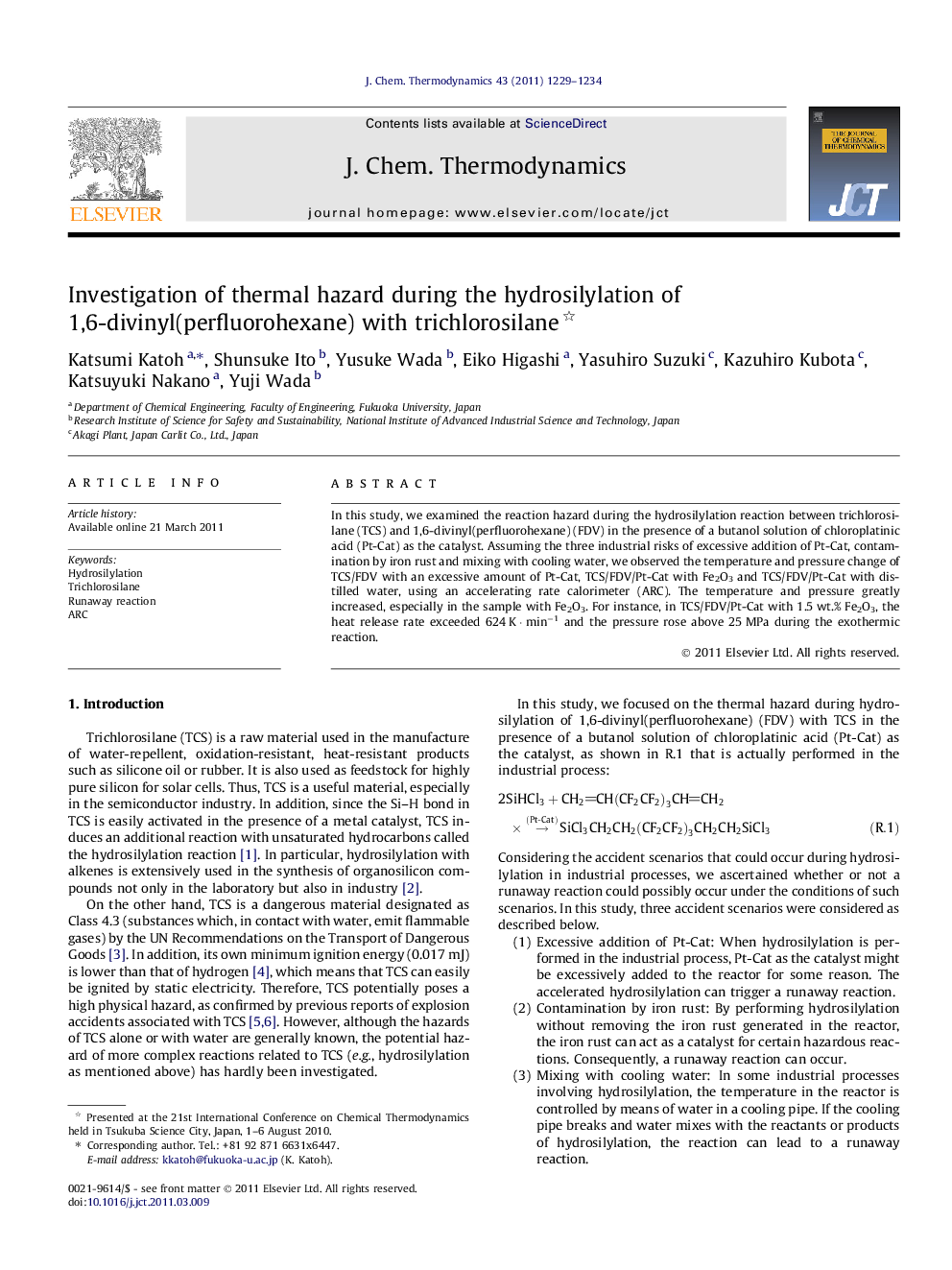| کد مقاله | کد نشریه | سال انتشار | مقاله انگلیسی | نسخه تمام متن |
|---|---|---|---|---|
| 216137 | 1426274 | 2011 | 6 صفحه PDF | دانلود رایگان |

In this study, we examined the reaction hazard during the hydrosilylation reaction between trichlorosilane (TCS) and 1,6-divinyl(perfluorohexane) (FDV) in the presence of a butanol solution of chloroplatinic acid (Pt-Cat) as the catalyst. Assuming the three industrial risks of excessive addition of Pt-Cat, contamination by iron rust and mixing with cooling water, we observed the temperature and pressure change of TCS/FDV with an excessive amount of Pt-Cat, TCS/FDV/Pt-Cat with Fe2O3 and TCS/FDV/Pt-Cat with distilled water, using an accelerating rate calorimeter (ARC). The temperature and pressure greatly increased, especially in the sample with Fe2O3. For instance, in TCS/FDV/Pt-Cat with 1.5 wt.% Fe2O3, the heat release rate exceeded 624 K · min−1 and the pressure rose above 25 MPa during the exothermic reaction.
► Thermal hazard during hydrosilylation of FDV with TCS in the presence of Pt-Cat as the catalyst was investigated using ARC in the heat-wait-search mode. The following conclusions are drawn:
► (1) In TCS/FDV/Pt-Cat (control sample), rapid reaction with dT/dtmax of 136 K · min−1 was observed. However, this reaction hardly released any pressure during the decomposition.
► (2) The thermal behavior of the sample with excessive Pt-Cat indicates that even in the case of the sample with 10 times the normal amount of Pt-Cat, dT/dtmax hardly increased in comparison with the control sample. In addition, hardly any pressure produced caused by decomposition was released, similar to the control sample.
► (3) When the thermal behavior of the sample in the presence of Fe2O3 was observed, dT/dtmax and ΔP were >624 K · min−1 and >25 MPa, respectively. This result indicates that a vigorous reaction could occur unexpectedly through contact with the iron rust generated in the reactor in the industrial process.
► (4) The thermal and pressure behavior was observed when water was added to the sample. Heat and pressure release with dT/dtmax of 50 K · min−1 and ΔP of 3 MPa was observed just after the water addition. The reaction then continued and the pressure gradually increased to 13 MPa. Although the generated gases included corrosive gases, the reaction of the sample with water was more gradual than that with Fe2O3.
Journal: The Journal of Chemical Thermodynamics - Volume 43, Issue 8, August 2011, Pages 1229–1234